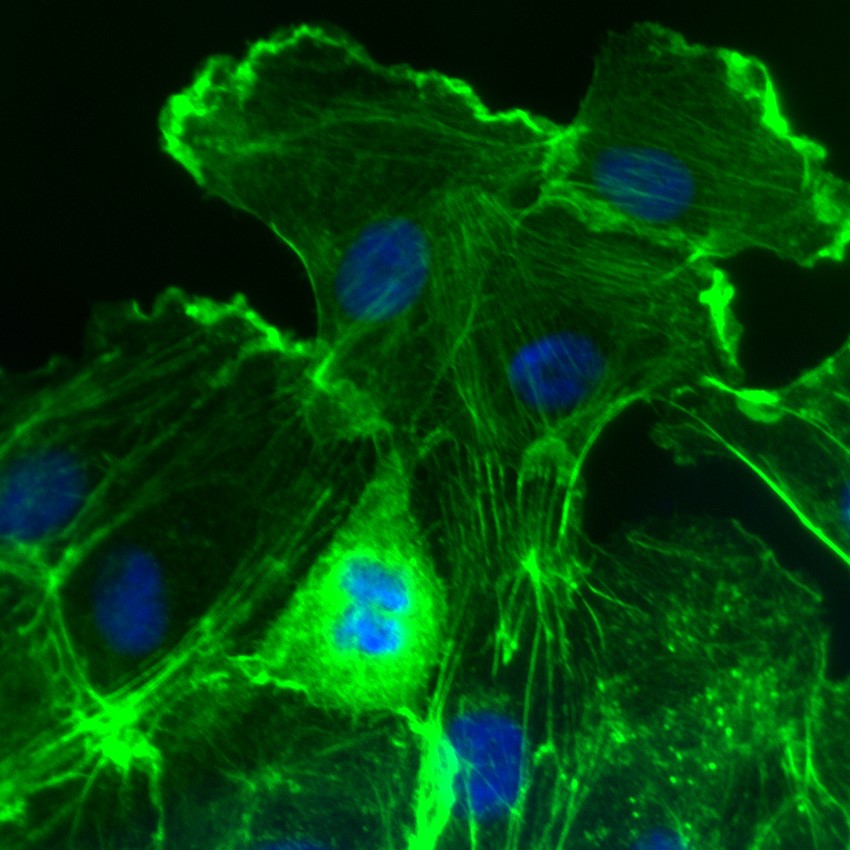Rac1 Activity and SOD1 Aggregates
- By Cytoskeleton Inc. - Small G-Protein News
- Dec 8, 2015

Recently R. Zeineddine et al. examined the molecular signaling pathways underlying cell-to-cell transmission of aggregated copper/zinc superoxide dismutase (SOD1). Misfolding, aggregation, and transmission of SOD1 is implicated in in vitro and in vivo models of Amyotrophic Lateral Sclerosis. Here, the authors examined the signaling pathways involved in macropinocytosis, a form of fluid-phase endocytosis, which provides the means by which macromolecules such as SOD1 aggregates are transmitted cell-to-cell. Macropinocytosis requires membrane ruffling, which in turn, depends upon re-arrangement of the actin cytoskeleton. Thus, the authors examined the activity of a known modulator of the actin cytoskeleton, the Rac1 GTPase, in motoneuron-like (NSC-34) cells. The authors found that exposure of NSC-34 cells to SOD1 aggregates initiates a cascade of sequential events: Rac1 activation > membrane ruffling > macropinocytosis > build-up of SOD1 aggregates intracellularly. Cytoskeleton’s absorbance-based Rac1 G-LISA activation assay kit (Cat. # BK128) was an essential reagent in this study, demonstrating that SOD1 aggregates induce Rac1 activation that leads to the formation of actin-based membrane ruffles. These two events are necessary for propagation of SOD1 protein aggregates (and other disease-associated protein aggregates) via macropinocytosis. These findings suggest therapeutic strategies for treating a multitude of neurodegenerative diseases.
- Rac1 G-LISA Activation Assay Kit (Colorimetric Based) (Cat. # BK128)

